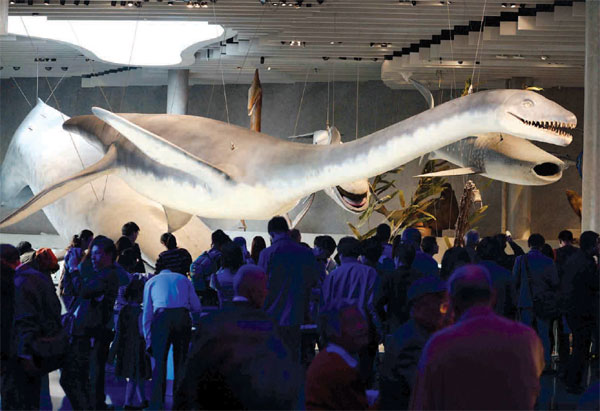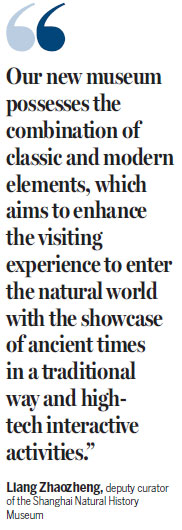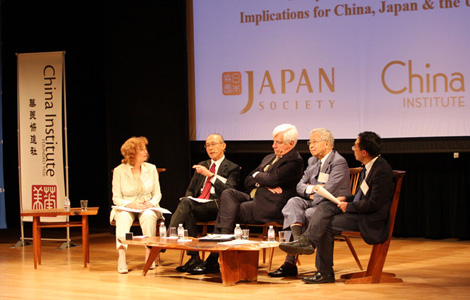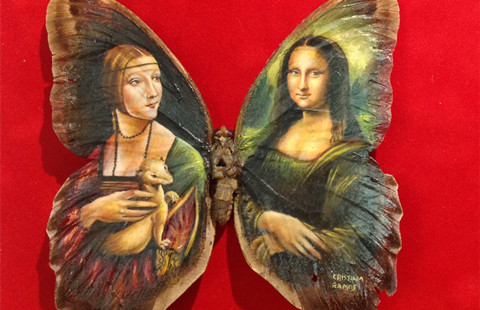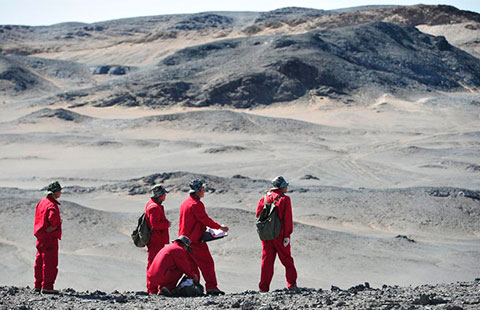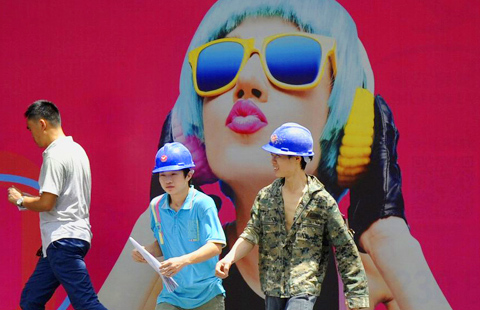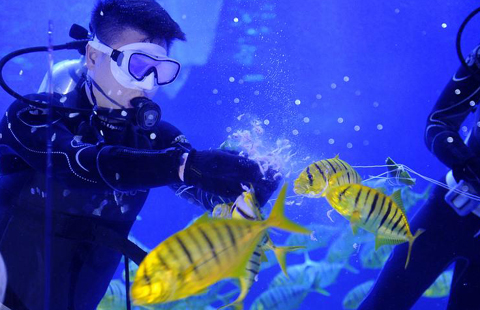Shanghai museum reopens to great fanfare
Updated: 2015-06-19 11:31
By Yu Ran and Wang Ru in Shanghai(China Daily USA)
|
||||||||
|
The newly opened Shanghai Natural History Museum receives more than 10,000 visitors on the first opening day on May 20 with people queuing for hours to enter the venue. [Photo by Lai Xinlin / for China Daily] |
The reopened Shanghai Natural History Museum is bigger in size and better in collections at new location
With the start of summer, the newly revitalized Shanghai Natural History Museum is preparing to offer fun-filled experiences for children and adults.
Located within the Jing'an Sculpture Park in the center of downtown Shanghai, new life was breathed into the museum with its reopening in a new building in April. The new building replaces the original Natural History Museum and improves the museum's ability to exhibit its collection with 20 times more exhibition space.
"Shanghai is becoming a global metropolis and we need a world-class museum," said Liang Zhaozheng, deputy curator of the Shanghai Natural History Museum.
The 44,517 square-meter museum, opened on April 19, has a collection of nearly 290,000 samples and the display of more than 10,000 artifacts from all seven continents, including a complete specimen of a 140-million-year-old dinosaur skeleton of Mamenchisaurus.
There are also rare specimens, which cannot be found elsewhere outside China, such as Yellow River mammoth, giant salamander, giant panda, and Yangtze alligator.
"Our new museum possesses the combination of classic and modern elements, which aims to enhance the visiting experience to enter the natural world with the showcase of ancient times in a traditional way and high-tech interactive activities," said Liang.
The new space welcomed more than 10,000 visitors on its first 'soft opening' day on April 20, with lines edging outside Jing'an Sculpture Park; most of the crowds were asked to come back another day.
However, the lucky ones who did make it inside after hours in line discovered it was well worth the wait.
"The word to describe the museum is comprehensive, and it is very worthwhile to put aside at least four hours of our day in order to absorb everything," said Chen Shaojie, the father of an eight-year-old son, who queued in the morning with his family for over an hour.
In the past two months, the museum has welcomed more than 25,000 visitors from inside and outside the city to explore the history, beauty and mystery of nature.
"My son who loves dinosaurs keeps asking questions through the three-hour tour, which allows him to learn the origin of natural species from samples and 4D videos. The knowledge and experience cannot be obtained from the lessons taken at school," said Chen.
Chen added that he would bring his son to visit the museum regularly as it is the perfect place for him to learn knowledge and have fun at the same time.
The building also includes exhibit spaces, a 4D theater, an outdoor exhibit garden, and a 30-meter-tall atrium that welcomes visitors with an abundance of natural light filtered through a striking glass wall inspired by the cellular structure of plants and animals.
"A great museum experience may have positive influence on a person's whole life," said Liang.
In this case, it's not just the inside that counts either. Designed by Perkins+Will, a leading global architecture firm founded in Chicago in 1935, the overall shape and organization of the new museum was inspired by the nautilus shell, one of the purest geometric forms found in nature.
The stunning 'bioclimatic' building has an 'intelligent building skin' to maximize daylight. Its four external walls emulate natural elements - including a vertical garden on the east wall, and a northern stone wall inspired by shifting tectonic plates and canyon walls eroded by rivers.
"The use of cultural references found in traditional Chinese gardens was key to the design," said Ralph Johnson, global design director at Perkins+Will.
"Through its integration with the site, the building represents the harmony of humanity and nature and is an abstraction of the basic elements of Chinese art and design," he said.
An exhibit on such a scale has been made possible by the move from the museum's old home in the Shanghai Cotton Exchange on 260 East Yan'an Road in Huangpu district, which could display just one percent of its collection at any given time.
People from Shanghai have special feelings towards the old museum, especially the largest exhibit, a 140-million-year-old dinosaur skeleton that inspired many kids' dream to explore nature and the world.
"It was a shame that the old museum had to be closed down. I still remembered the first time entering the museum when I was six years old, I was totally shocked by the giant dinosaur skeleton popping in front of me," said He Xin, a 33-year-old engineer whose childhood was filled with memories of going to the old museum.
He added that he would go to the new museum someday to see the enlarged collection of samples but the strong emotional attachment with those old exhibits he used to have cannot be replaced.
yuran@chinadaily.com.cn
wangru@chinadaily.com.cn
Most Viewed
Editor's Picks

|

|

|

|

|

|
Today's Top News
Obama suggests more gun control after shooting
Talks seen as prelude to visit by President Xi to US in September
The most costly cities for expats
House passes fast-track trade bill
Gunman kills nine people in South Carolina church shooting
US House moves to revive Obama's Pacific trade pact
Hong Kong lawmakers reject election reform proposal
Lies and false hopes entrap Xinjiangers
US Weekly

|

|
